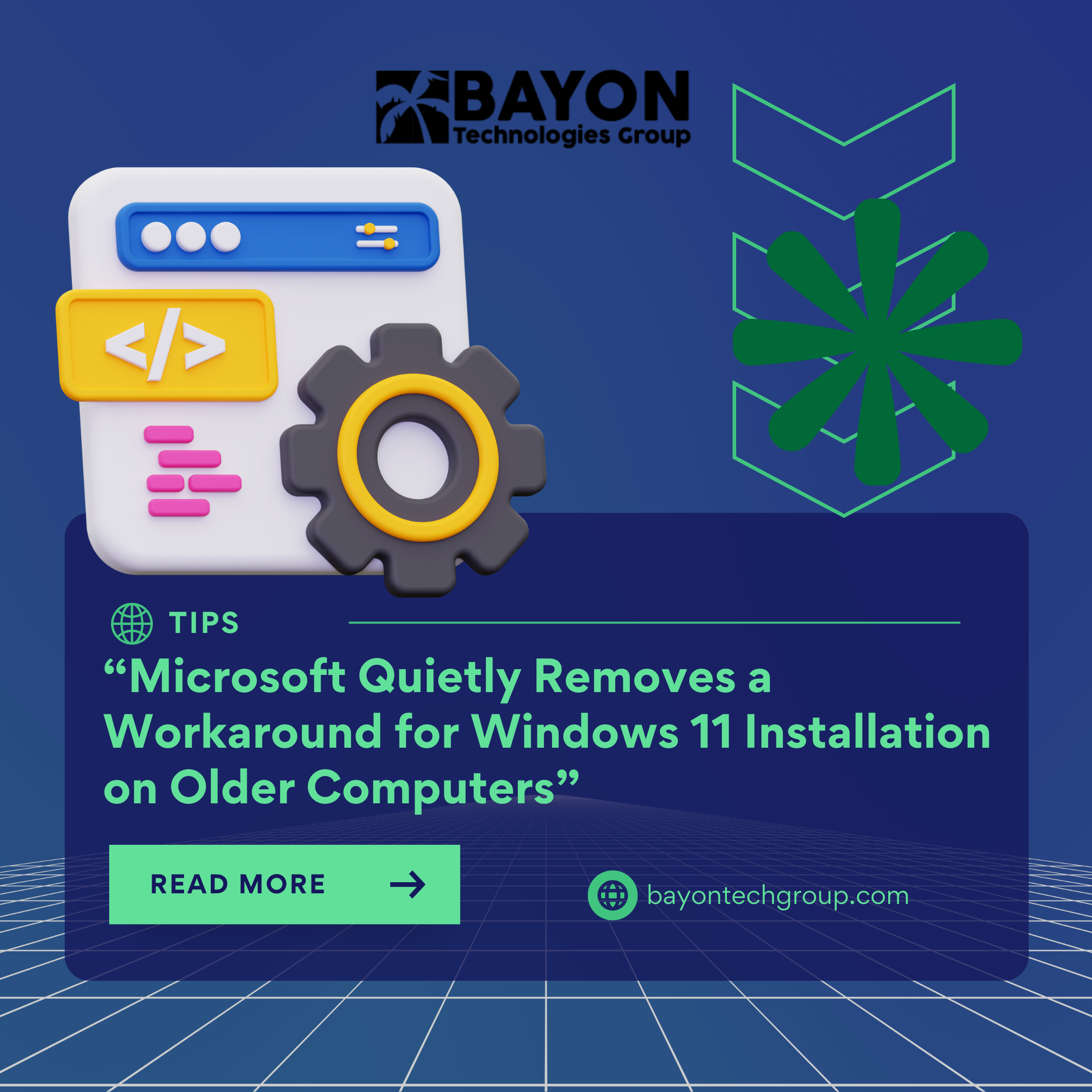Microsoft Quietly Removes a Workaround for Windows 11 Installation on Older Computers

Microsoft seems to be encouraging customers to upgrade their hardware as Windows 10 approaches its end-of-support date. Many IT aficionados have taken notice of a minor but telling move: the elimination of a widely used workaround for installing Windows 11 on outdated, incompatible PCs. This registry change technique, which was once extensively used and disseminated to get around the stringent TPM 2.0 and CPU requirements, has since been silently removed from Microsoft's official support pages.
The Eliminated Workaround
For a while, a registry hack that got around the TPM 2.0 barrier gave customers hope if they couldn't match the hardware requirements for Windows 11. After being explained on Microsoft's support website, this approach allowed many people to install Windows 11 on computers that they would not have been able to otherwise. However, Microsoft had long warned that if this approach was not done correctly, it may result in "serious problems." These cautions were reaffirmed several times, especially in the latter half of last year.
For many, the registry technique was still a good choice despite these warnings. However, its sudden removal from the official help pages indicates a significant change in Microsoft's approach. Microsoft's decision to remove the workaround encourages consumers to buy new, fully compatible devices rather than figure out ways to get around hardware limits.
Promoting the Purchase of New Hardware
The elimination of these suggestions highlights Microsoft's overarching objective, which is to increase sales of new computers that satisfy Windows 11 specifications. Those with older systems now have a tough decision to make because the free update to Windows 11 24H2 is only accessible to hardware-eligible devices. They have three options: buy new hardware, keep using Windows 10 (with the option to pay for longer support), or think about moving to a different operating system, such as one of the many Linux variants that resemble Windows.
It is possible to interpret Microsoft's decision to eliminate the workaround as a subtle but intentional attempt to gradually phase out older technology from its user base. The business is fully aware that registry tweaks and other workarounds are not the best options. They are inherently dangerous and may result in compatibility problems or instability that could negatively impact the user experience. Microsoft is essentially encouraging its users to switch to a more safe and reliable platform by doing away with official guidelines on these techniques, which is advantageous for the ecosystem as a whole as well as the consumer.
Assessing Your Choices
The situation is changing for people who are still on Windows 10. With support coming to an end, both individual users and small enterprises need to think carefully about what to do next. If your current hardware is capable, upgrading to Windows 11 offers a number of better functionality and security precautions. If not, the only practical way to guarantee ongoing support and protection may be to invest in new technology.
As an alternative, people who are unable or unwilling to spend money on new hardware may look into the possibility of prolonged support for Windows 10 or even switch to a different operating system. Every option has a unique set of trade-offs, so before choosing one, you must evaluate your needs, financial situation, and risk tolerance.
Final Thoughts
Microsoft's decision to quietly remove the installation instructions for Windows 11 on older PCs sends a strong message: outdated hardware is being abandoned as the future moves forward. Although the registry workaround is still in use, there are hazards associated with using it that can outweigh the potential savings.
Act Right Away!
Get a FREE consultation from Bayon Technologies Group if you're deciding what to do next or need professional advice on updating your systems. In this quickly changing digital landscape, let us assist you in creating a customized plan to keep your company safe and prepared for the future.
‹ Back







